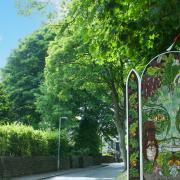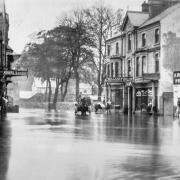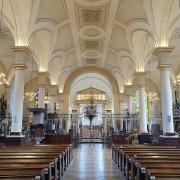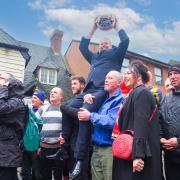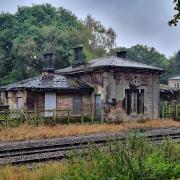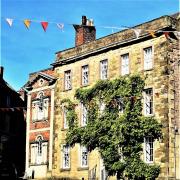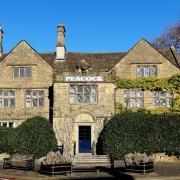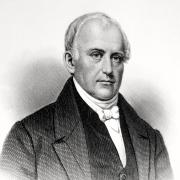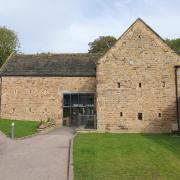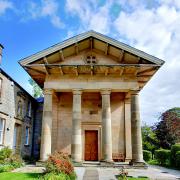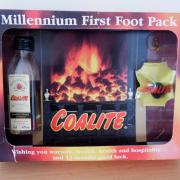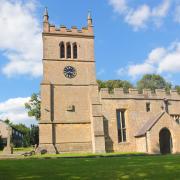Words by Richard Bradley
In December 2020’s Derbyshire Life I covered one of my favourite customs – mumming or, as more likely to be termed in Derbyshire, guising: the amateur performance of a short play during the festive period using makeshift costumes and props in local streets, pubs and houses.
A year has sped by since then, and for this festive issue we focus on a sub-section of midwinter guising: The Derby Tup.
‘Tup’ is a dialect word meaning an uncastrated male sheep. The origins of The Derby Tup are, like much folklore, shrouded in mystery. It made an appearance in a folk song published in 1867 in Llewellyn Jewitt’s The Ballads of Derbyshire; a song of considerable black comedy and hyperbole.
At some unknown point the ballad expanded into a short guising play revolving around the killing of the Tup.
The Derbyshire Times of January 2 1869 reported on the festivities in the streets of Chesterfield on Christmas Eve 1868, where various carol singing and mumming groups were seen performing as well as ‘a lot of youngsters who glory in the traditional ‘Oud Tup O’ Darby’ [sic]’.
The play features recurring characters: the Man, Our Owd Lass (the Man’s wife), the Butcher and the Tup itself, sometimes accommodating extra characters depending on the size of the team.
This would be performed around Christmas and New Year’s Eve, usually by adolescent boys, in local pubs and clubs, in the streets and house visiting door to door, and a collection taken after the performance.
As the performers got older, the song and play would be passed down to younger generations and would almost always be learnt orally, with no written scripts existing.

Whoever played the Tup generally drew the short straw. This was certainly the case for Harry Perkins, who grew up at Stanfree, North East Derbyshire, in the 1950s.
Harry’s wife Gill described to me how, during a performance at the Hillstown Club, Bolsover, the young Harry was accidentally knocked out cold during the ‘death’ scene.
This was despite his sheep costume containing some in-built protection, consisting as it did of ‘an old ARP helmet covered with a sack’.
Harry performed the act in the local area with around five pals aged eight to 14. Gill recalled, ‘they would walk all the way to Hillstown and back, starting at The Apple Tree [pub] and calling at various houses, knocking on doors and performing all the way.
‘The older ones would teach younger lads and it carried on for quite a few years, it had been going on for a while before Harry was ‘recruited’’.
A wonderful record of the Tup in its heyday survives through the 1974 film The Derby Tup, produced for Garland Films by folk music and dance scholar Ian Russell and the late Barry Callaghan, filmmaking tutor at Sheffield Polytechnic, who was also heavily involved in folk music.
The film is included on the BFI’s DVD release Here’s a Health to the Barley Mow, a compendium of archive footage of folklore events from around the UK.
The film documents the 1971 team at Ridgeway on the Derbyshire/South Yorkshire border preparing for and giving a performance, followed by a completely new team performing the custom in 1972.
The ways in which the sheep costume is improvised are discussed – it could comprise a turnip on a stick and an old coat, or simply a performer crouched under an old blanket.
The prop Tup used at Ridgeway is described as a ‘more splendid and permanent creation’ carved from oak with flashing eyes supplied by torches, which at the time of filming was around 20 years old, having been passed down through various teams who inherited custodianship of the custom.

The same Tup can be seen 20 years later in a video shot by folklorist Peter Bearon of the Ridgeway team performing on New Year’s Eve 1995 at Marsh Lane and Ford, near Eckington (but where is it now? Lurking in someone’s attic?).
At the end of Russell and Callaghan’s film the 1972 team are shown dividing up their considerable collection money.
In addition to the film, Russell conducted extensive fieldwork research into the custom throughout the 1970s, when it was flourishing in surrounding communities in North East Derbyshire.
The results were published in the 1979 volume of Folk Music Journal where performances were studied by groups from Barrow Hill, Birdholme, Bolsover, Brimington, Creswell, Eckington, Harthill, Killamarsh, Middle Handley, Poolsbrook, Renishaw, Ridgeway, Stanfree and Unstone.
It is clear from Russell’s article that the performance of The Derby Tup at Christmas and New Year was a huge part of the cultural fabric of midwinter festivities in North East Derbyshire, and an important rite of passage for its young performers.
And yet, within the space of a generation, this custom has all but died out. Why? Folklorist Ross Parish, author of the In Search of Traditional Customs and Ceremonies blog, suggests a multitude of reasons.
Firstly, an increased cultural sensitivity to the mistreatment of animals, with another factor being the greater range of entertainments teenagers can access by comparison to the 1970s, combined with increased affluence.
‘Children are less likely to find ways to raise their own money if they don’t need to’, Parish observes - and what in the 1970s may have been viewed as youthful entrepreneurship may now be seen as ‘begging’ because of cultural shifts.
‘This combined with ‘Stranger-Danger’ probably sealed the fate of the original run of the custom – many could not imagine their young children travelling around pubs to collect money and be concerned, rightly so, for their safety’.
You can still see the Tup being performed but would have to venture into South Yorkshire, as I know of no performance teams within Derbyshire in the 2020s.
However, in an exciting last-minute development as I was putting this article together, I made contact with Matthew Hedley Stoppard.

A native of Clay Cross, Matthew is, like me, fascinated by local customs and folklore, and in 2020 published through Valley Press The Garland King, his collection of poetry inspired by strange Derbyshire traditions.
I had seen on Matthew’s Instagram page (@mhstoppard) that he had exported a Derbyshire custom to the West Yorkshire town of Otley where he now lives, performing the Derby Tup with members of his family at Christmas 2020.
Matthew describes himself as ‘a proud Derbyshireman’ and The Derby Tup is his favourite mummers' play and folksong, therefore ‘performing it in deepest West Yorkshire is all part of my missionary work’.
Despite having grown up in North East Derbyshire, Matthew had never witnessed the Tup being performed locally first hand.
He drew on Russell and Callaghan’s film for inspiration for a performance involving his wife and two sons Ted and Fran, explaining, ‘We had found a sheep's skull at the side of the river and this became our Tup (after a thorough clean) when we performed it just before Christmas 2020.

‘We performed it three times on the night and the majority of neighbours loved it and had lots of questions about the play's origins.’
Matthew gave a reading of his poems at Chesterfield Labour Club on November 27, which included an interactive version of The Derby Tup - possibly the first time the Tup has been performed in Chesterfield (perhaps Derbyshire) for 30 or 40 years.
Despite the dearth of local performances, the Derby Tup’s legacy lives on within the county: a pub at Whittington Moor, the former Brunswick Hotel, has been renamed The Derby Tup, whilst a stone statue of the fabulous beast by sculptor Michael Pegler squats on East Street in Derby.
Best of all, on a visit to Derby’s St George’s Day festivities in 2017, I spotted a child carrying a homemade Derby Tup effigy constructed of a broom handle, shoebox and footballs for eyes.
As ever, I would welcome any memories via Letters to the Editor if any readers remember witnessing, or performing it.
I feel sure there’s got to be some lurking in some Derbyshire photo albums somewhere!





